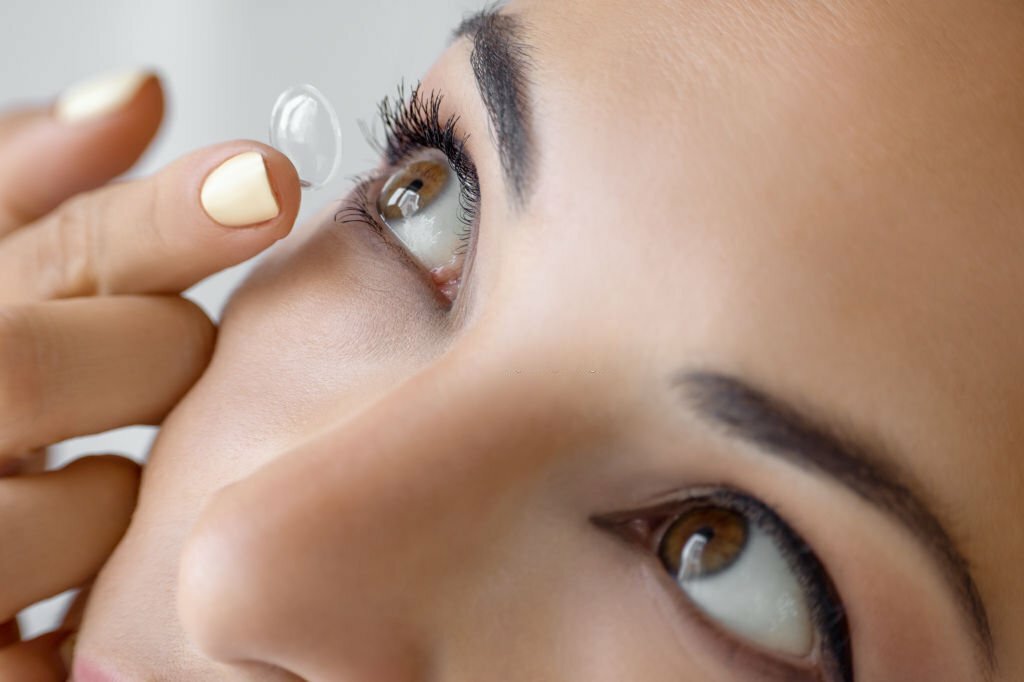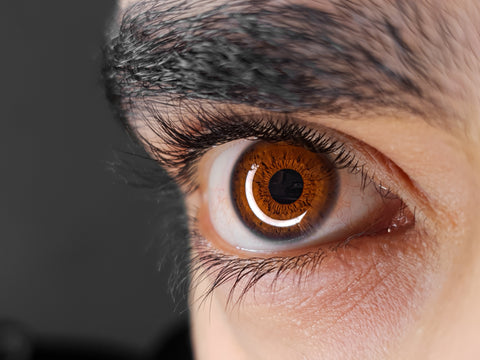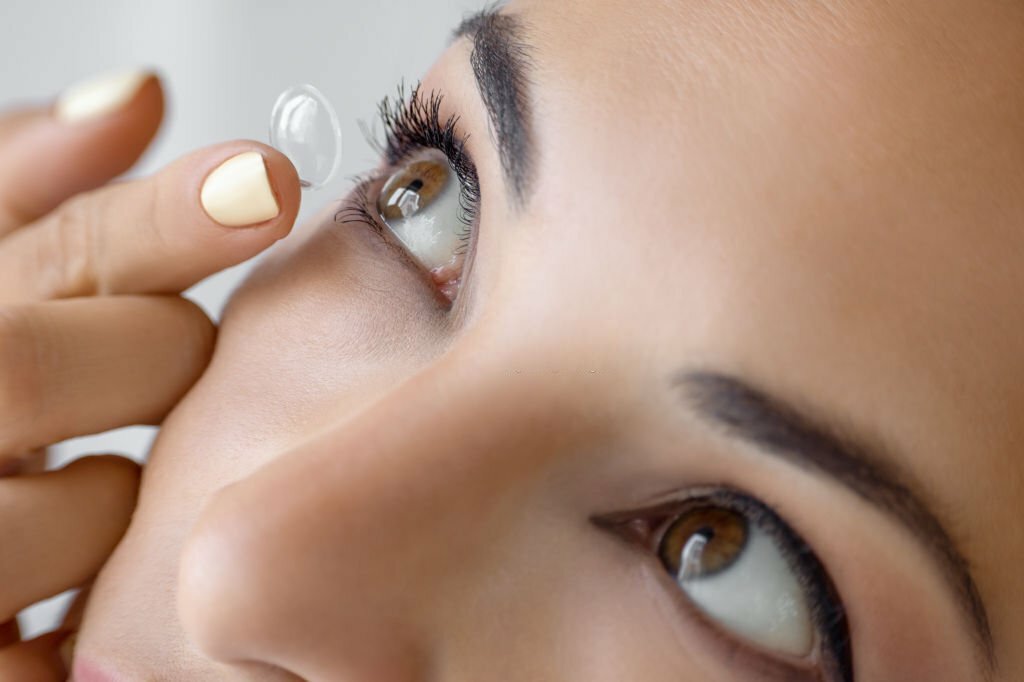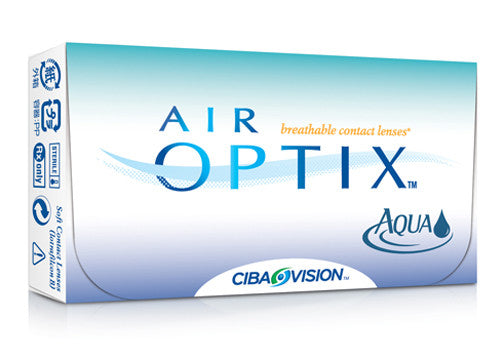
It can be incredibly frustrating when a contact won't stick to eye, not to mention it can disrupt your whole routine. That's why we're here to provide insights and solutions for those moments when your contact lenses seem to have a mind of their own, refusing to stay put where they belong.
In this comprehensive guide, we'll navigate various scenarios where contact lenses might give you a hard time, particularly during insertion or at the most inconvenient times.
Whether you're a seasoned contact lens wearer or new to the world of vision correction, we've got practical advice to ensure your lens-wearing experience is comfortable.
So, let's dive in and tackle this lens dilemma head-on!
What this article covers:- What to Do If Contact Lens Continuously Falls Out During Insertion
- What to Do If Your Contact Falls Out at an Inconvenient Time
- How to Properly Insert a Contact Lens
- How to Stop Lenses From Falling Out During Insertion or Removal
What to Do If Contact Lens Continuously Falls Out During Insertion
When inserting contact lenses, if they keep falling out, it's not just an annoyance; it's a sign that something needs to be adjusted in your routine. Here's how.
Before insertion, always check your lens. If it's inside out, it won't adhere properly to your eye. A simple way to check is to place the lens on your finger and look at it from the side. If the edges flare out, it's inside out.
If that's not the issue, make sure your eye is moist before you insert the lens. If your eyes are dry, the lens may not stick properly. Use a saline solution or a rewetting drop for lubrication if necessary.
If you're still having trouble, consider trying a different type of lens. For example, 1-Day Acuvue Moist contact lenses are designed for comfort and may provide a better experience during insertion.
These strategies continue to apply, whether you're learning how to get contacts in small eyes or how to insert toric contact lenses.
What to Do If Your Contact Falls Out at an Inconvenient Time
Having a contact lens fall out at an inconvenient moment can be distressing, but maintaining calm is crucial. Begin by washing your hands thoroughly to avoid transferring any bacteria to your eye, then proceed to inspect the lens for any damage or debris.
If the lens is dirty or damaged, avoid reinserting it. Instead, utilize a travel-sized contact lens solution for cleaning, or rehydrate it with a saline solution or re-wetting drops if it's dried out.
Our findings show that it's vital never to use water, as it can introduce harmful impurities or bacteria.
Having backup solutions can significantly alleviate these challenges. Likewise, carrying a spare set of disposable contacts, like the Bausch and Lomb infuse contact lenses, offers a convenient alternative.
In situations where you're unable to reinsert the lens safely, such as while driving or without access to a sanitary environment, it's prudent to wait until you're in a more suitable setting.
Ultimately, the key takeaway is that preparedness is vital to managing these scenarios effectively. Based on our observations, it can be helpful to assemble a small, portable contact lens care kit containing essentials like a lens case, solution, and a spare pair of lenses for moments like these.
How to Properly Insert a Contact Lens
- Make sure you're in a well-lit area with a mirror with the necessary supplies in reach.
- Wash your hands thoroughly with soap and water, then dry them with a lint-free towel to avoid transferring any dirt or bacteria onto the lens or into your eye.

- Before you pick up your lens, check it in the storage case to ensure it's clean, undamaged, and free from any debris. Products like Biofinity lenses are known for their quality and durability, ensuring a comfortable fit.
- Hold your upper eyelid open, and use the middle finger of your other hand to pull down the lower eyelid.
- Look upward and gently place the lens on the lower part of your eye. Once the lens is in, slowly release your eyelids and blink a few times to help the lens settle.
- If your vision is clear and the lens feels comfortable, you've successfully inserted your contact lens! If it feels uncomfortable, you may need to reposition or clean it.
How to Stop Lenses From Falling Out During Insertion or Removal
To prevent your contact lenses from falling out during insertion or removal, start by choosing quality lenses known for their excellent fit, such as Johnson and Johnson contact lenses, which are designed to conform comfortably to your eye's curvature.
Hand positioning and eye lubrication play significant roles as well. Keep your hands steady, using your non-dominant hand to hold your eyelids open to prevent involuntary blinking during insertion or removal.
Understanding how to keep your eyes open when putting in contacts is a common hurdle for many contact lens users. It's natural for your eyes to want to close when something approaches them, but with practice, you can overcome this reflex.
Helpful tip: try looking away from the lens as you insert it, as this can sometimes make it easier to avoid blinking.

When it comes to removal, employ proper techniques to prevent the lens from falling out. Look up, gently pull down your lower eyelid, slide the lens down to the white of your eye, and carefully pinch it out with your thumb and index finger.
Our research indicates that if you're facing continual issues with your lenses falling out, there might be a problem with the fit, and you may need a different prescription or lens type.
Conclusion
Dealing with a contact that won't stick to your eye can be a common but solvable issue. Throughout this guide, we've explored various strategies to effectively handle this problem.
From moistening your eye before insertion, using quality products, to mastering the correct technique for both inserting and removing your lenses, we've walked you through proper care, handling, and usage of contact lenses, so you can prevent them from falling out or not adhering correctly to your eye.
Explore the extensive range of products at Fresh Lens and find the perfect solution to all your contact lens dilemmas!
If you want to learn more, why not check out these articles below:
- False Eyelashes and Contact Lenses
- Contact Lens Sticking to My Finger
- Contact Prescription to Glasses
- How to Read Contact Prescription
- Can You Wear Colored Contacts Over Prescription Contacts
- Is Your Contact Prescription the Same as Your Glasses?
- Can You Wear Prescription Sunglasses with Contacts?
- Best Contacts for Dry Eyes
- Can Dry Eyes Cause Blurry Vision with Contacts?
- Are Daily Contacts Better for Dry Eyes?
- Colored Contacts for Dry Eyes
- Scleral Contact Lenses for Dry Eyes
- Best Color Contact Lenses
- Most Comfortable Contact Lenses
- Best Multifocal Contact Lenses



































